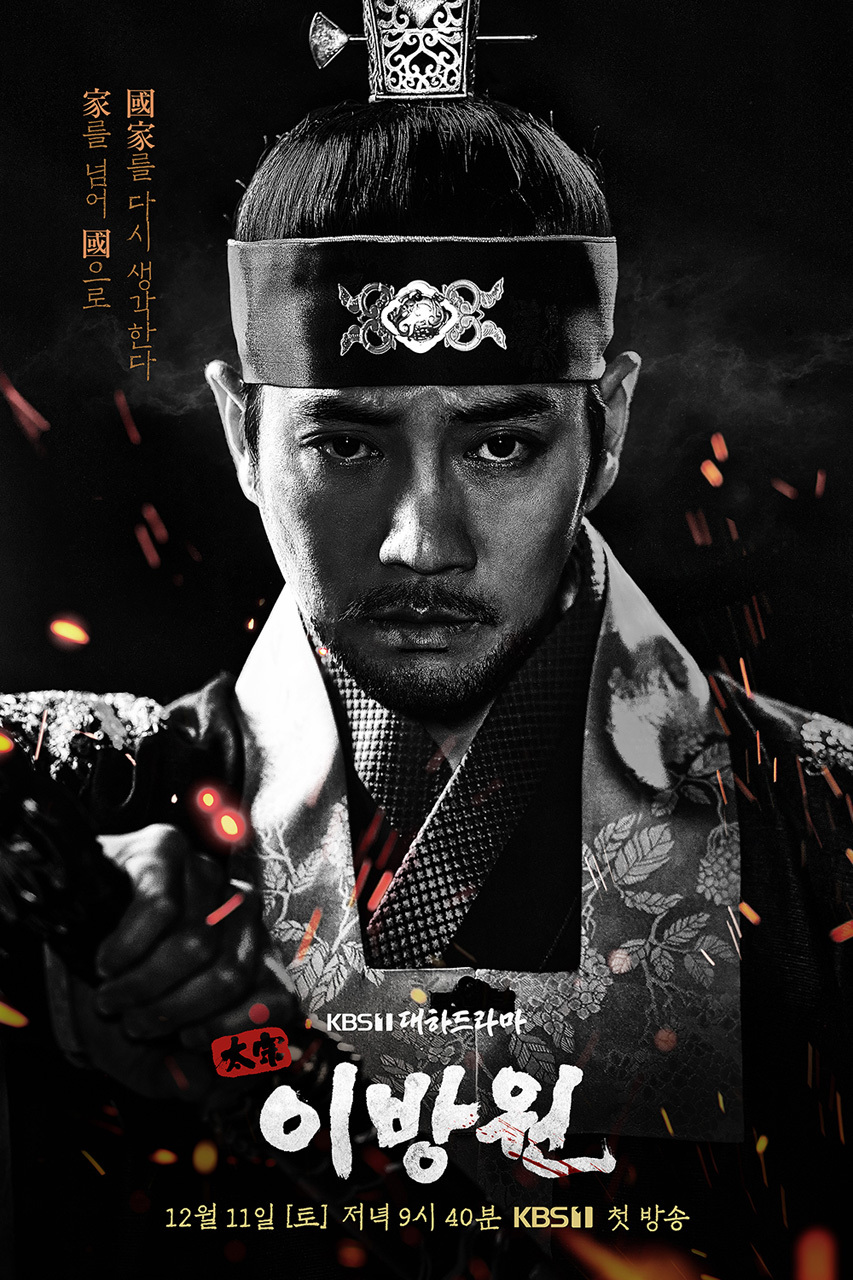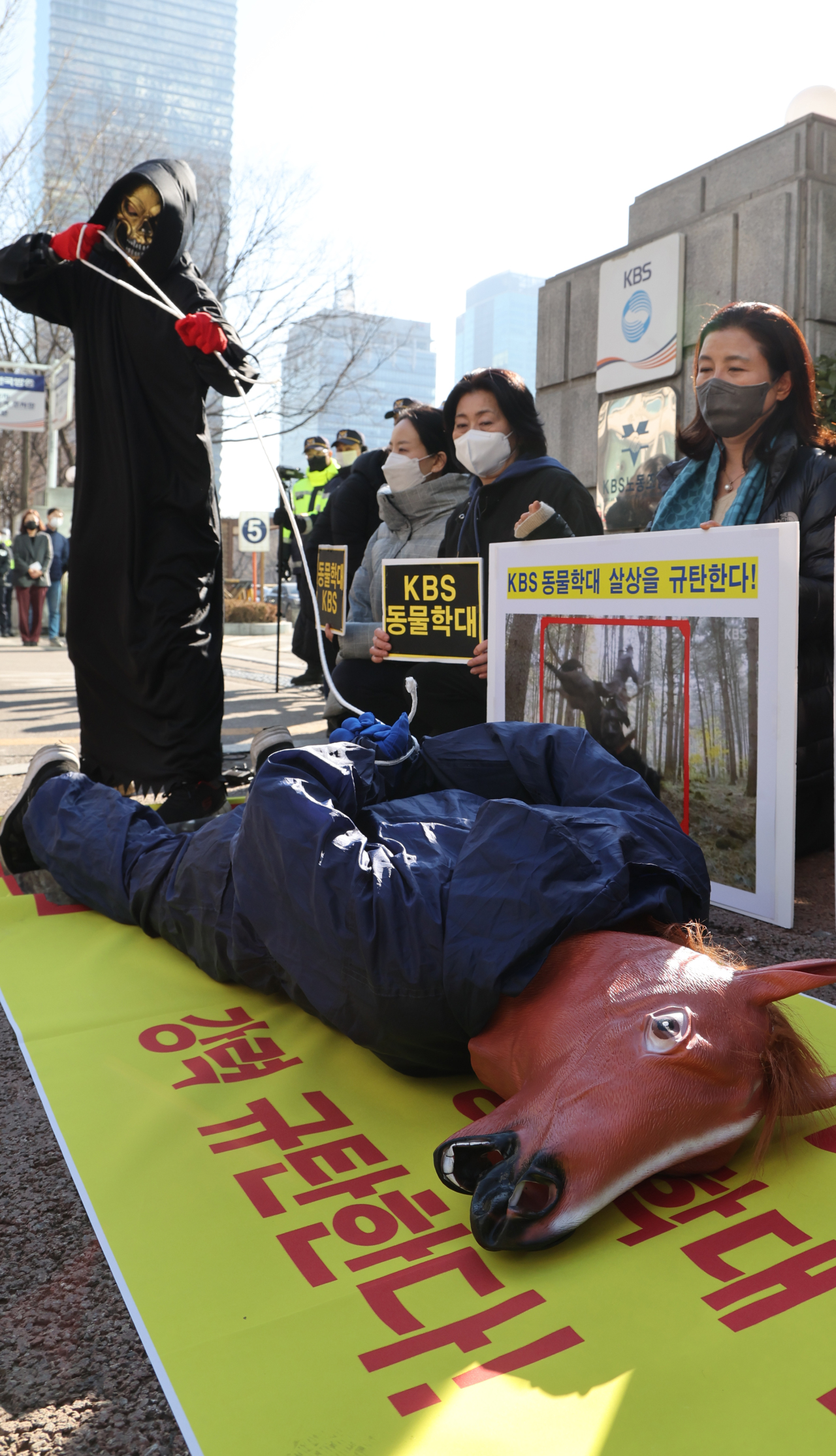
The poster of “The King of Tears, Lee Bang-won.” (KBS)
State-run broadcasting company KBS announced last week it is adopting guidelines for animals in productions, responding to a prolonged dispute and ensuing public outrage over a horse’s death after filming of historical drama “The King of Tears, Lee Bang-won.”
Last month, it was revealed that the production team of “Lee Bang-won” had forcibly tripped over a horse while shooting, causing the stuntman’s injury and the horse’s death a week afterwards. It was later revealed that there was a complete lack of guidelines to ensure animal safety in the country’s film and media industry.
While belated, it is the industry’s first such move. The KBS guidelines state that a production team should use computerized graphics as much as possible in scenes that are potentially dangerous to animals’ physical or psychological health. It also bans intentionally injuring or killing animals, as well as eating them live. It instructs producers to designate animal protection supervisors and hire veterinarians during production.
The Ministry of Agriculture, Food and Rural Affairs is currently working on creating pan-media guidelines on the aforementioned issue. Each broadcaster and production studio will be required to apply these guidelines to their existing production guidelines. The guidelines will specify that animals must not be regarded as mere props, and include recommendations for measures like CG substitutes, safety equipment, and sufficient rest and food for animals. It will also recommend the mandatory presence of animal experts during shooting.
The ministry also plans to revise the existing Animal Protection Act to address animal filming in particular.

Local animal rights groups hold a protest against the production team of “The King of Tears, Lee Bang-won” in front of the KBS headquarters in Seoul on Jan.21, concerning a horse‘s death that occured during filming. (Yonhap)
Korea currently has an Animal Protection Act that bans cruelty against animals. Cruelty is specified as inflicting unnecessary and avoidable physical and psychological distress, or neglect that exposes animals to hunger and illness. But there is no article or clause that dictates what should happen during filming with animals, meaning what is defined as “unnecessary and avoidable physical distress” is up for interpretation by the filming crew.
The act states that companion animals, which refers to pets, should be provided certain measures for well-being such as exercise and resting facilities. However, the legal interpretation of this category of animals cover only dogs, cats, rabbits, ferrets, guinea pigs, and hamsters. This means former racehorses like Kami who was involved in the production of “Lee Bang-won” are in a legal blind spot when it comes to filming.
Of course, animal protection law prevents general acts of cruelty against mammals, birds, reptiles, amphibians and fish except those used for food, but there is no specific mention about how they should be treated.
On Wednesday, local groups Korean Animal Welfare Association and Jeju Vegan co-hosted a public discussion on racehorse welfare with Democratic Party of Korea’s Rep. Wi Seong-gon. They introduced a case of racehorse Seung-ri, who was among the best in the game with 19 career wins, but was neglected to die in a barn after retiring at age 10.
“There are financial, administrative, and legislative limits in ensuring the welfare of racehorses. We need the government’s support, legislation (of related laws), and cooperation of related organizations,” Kim Jin-gab, manager of the Korea Racing Authorities’ Veterinarian Center said.
Park Chang-gil, the head of the non-governmental organization Voice 4 Animals, pointed out that while there are multiple clauses on protecting companion animals, there is not a single one on racehorses.
What about in Hollywood?Granted, legislating animals’ rights in filming is not exactly the norm by international standards. In the case of the United States, no federal or state law specifies how animals should be treated during filming, according to “Overviews of Laws Concerning Animals in Film Media” published by the Michigan State University College of Law.
As of today, the only regulations directly protecting animal actors are guidelines from the American Humane Association.
Established in 1877, the AHA is a nonprofit organization that monitors humane treatment of animals on sets of Hollywood films and other broadcast productions. American and international audiences are familiar with its certification mark which reads, “No Animals Were Harmed.” This mark appears before or during credits of movies or TV programs where animals are featured.
While not a government body, the AHA’s film and television unit is sanctioned by the Screen Actors Guild to oversee animal use in media productions, thus allowing it to issue its widely-recognized credentials.
The AHA does have limitations like lack of enforcement and manpower, which was cited as the reason for its limited oversight of “The Lord of the Rings” trilogy in New Zealand.
Public Awareness is the keyDespite no government body overseeing animal filming and the inherent limitations of the AHA, most Hollywood productions seem keen to follow guidelines on featuring animals.
Even though animal safety in “The Lord of the Rings: The Two Towers” was rated “questionable” by the AHA, the organization acknowledged the production team’s cooperation in answering questions and providing documents.
Despite not endorsing the film, the AHA makes it clear that the production team at least took some measures for animal protection. It is mentioned in the AHA report that the scene in which a band of horsemen appear to be running down a steep hill, and the live spoils eaten by the character Gollum were actually augmented or generated through computer-generated imagery.
Public scrutiny prevents US-based filmmakers from disregarding animal safety on set, or treating them as simple props. By contrast, animal rights in films were rarely discussed by the Korean public until recently.
When an anesthetized deer was forcibly thrown to the ground during the shooting of the popular 90s historical Korean drama “Tears of the Dragon,” hardly anyone looked twice.
In December 2020, local civic group Korea Animal Rights Advocates announced it published guidelines for animal protection in media filming, which garnered next to little attention more than a year before the “Lee Bang-won” incident.
While animals lacked safety and proper treatment on sets due to a lack of public awareness in the past, a recent series of events indicate a change in the tide. The KARA was one of the groups invited by the KBS to consult on its new guidelines announced last week, showing that the group’s efforts are being appreciated more than they had been in the past.
In Hollywood, a relatively early incident sparked the monitoring of animals on film.
The 1939 movie “Jesse James” featured a horse chase that resulted in a blindfolded horse falling to its death, which resulted in a public outcry. It forced producers to ask the AHA to police the treatment of animals in the entertainment industry. In a similar vein, animal rights activists hope that the death of Kami was Korea‘s “Jesse James” moment.







